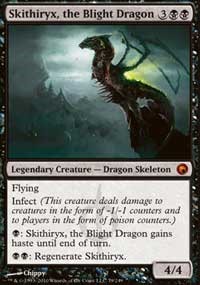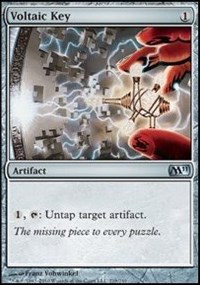Table of Contents
Magic: the Gathering is a card game that’s been around for almost thirty years now. They’ve had plenty of time to get things right and figure out the correct balance for cards along the way.
This wasn’t always the case in the beginning, though. One of the reasons older sets are so expensive is that they’re extremely powerful – in fact, they’re powerful to the point where people say they’re “broken.” (For any beginners looking at this, note that “broken” isn’t necessarily negative here – it just means massively over-powered.)
Mana Vault was printed in the first set, Alpha, and is a prime example of excessive power. However, anyone new to the game might look at it and wonder why Mana Vault is good.
We’ll be discussing what makes this old card so useful in this post.
Intro to Mana Vault

Mana Vault is one of the very first mana rocks in Magic’s history. As we mentioned earlier, it was printed in Alpha, the first set in the game. The phrase “mana rock” in this case means that it’s just an artifact that can produce mana, similar to lands.
Like most other artifacts, it’s colorless, which means it can easily be used in any deck. Its main function is to provide ramp, which means it helps you get access to extra mana quickly.
Lack of a color identity makes mana rocks extremely popular in non-green decks. This is because green is naturally good at ramping into mana, while the other colors…not so much.
Note that Mana Vault only costs one mana to cast, and gives you three mana when you tap it. That means it’s tripling the mana you put into it.
However, once you tap it, it doesn’t untap unless you pay four mana. Furthermore, you take damage from it if it is tapped at the end of your turn.
This is why some beginning Magic players might look at it and scoff. It looks like you’re paying four mana to get three, and then receiving a nasty shock. How could that possibly be useful?
Here’s Why Mana Vault is Good
The ramp is real.

Remember, Mana Vault only costs one mana to cast and produces three. It’s kind of like a colorless Dark Ritual – at the very worst, you get to ramp to three.
This means you could tap it on turn one for three mana if you wanted to, but many choose to do so on turn two. On turn two, with two colored mana from lands and Mana Vault untapped, you could potentially play something as crazy as Skithiryx on your second turn…then start wrecking your opponents before they’ve built up any momentum.
It gets crazy when you can untap it.


Mana Vault really shines in decks that can abuse its ramping ability by untapping it. If you actually paid four mana to untap it every time, you’d be ripping yourself off, so that’s not the objective.
What you should do with Mana Vault is use cards that allow you to untap it without paying. One creature that can do this is Voltaic Servant, pictured above.
Make it even better by using Voltaic Key alongside Voltaic Servant. This way, you can untap your Mana Vault at the beginning of your turn, then untap again at the end of your turn to protect yourself from the damage.
If your deck is built around untapping, you can skip the downside to Mana Vault’s untapping cost and the damage each turn. Thus, if untapping mechanics are already built into your deck, Mana Vault is an excellent fit.
Drawbacks to Using Mana Vault
It can be costly.
The monetary cost of Mana Vault has been pretty high historically. It’s ranged anywhere from thousands to hundreds of dollars depending on which set you’re purchasing it from.
Nowadays, you can get some Revised Edition Mana Vault cards for a pretty modest price compared to how it was in the past. However, if you’re on a really tight budget, even spending around $50 on a single card might be too steep.
Additionally, its cost could spike again in the future.
To use it to its full potential, you have to build around it.
Even if all you did was play Mana Vault early on, get the three mana, and never untap it, it would still be an extremely powerful card. That’s tripling your mana, which is amazing.
However, playing Mana Vault that way isn’t using it to its full, glorious potential. The objective should be to untap it for free as much as possible. This not only to avoids the damage from it, but allows you to get as much mana out of it as you can.
In other words, using Mana Vault to the fullest extent of its power means specifically incorporating cards with a certain mechanic – untapping – into your deck. This isn’t a problem if that was already your plan.
It could be a hassle, though, if untapping wasn’t really part of your original vision for the deck.
Wrap Up
At the end of the day, Mana Vault is a ridiculously good card. Its drawbacks are negligible in comparison to the benefits it gives you. This one gets a seal of approval from us, and we strongly recommend giving it a try if you’re able to get one.
Want to read another breakdown of a powerful card? Be sure to read our post about why Oko is so good.
